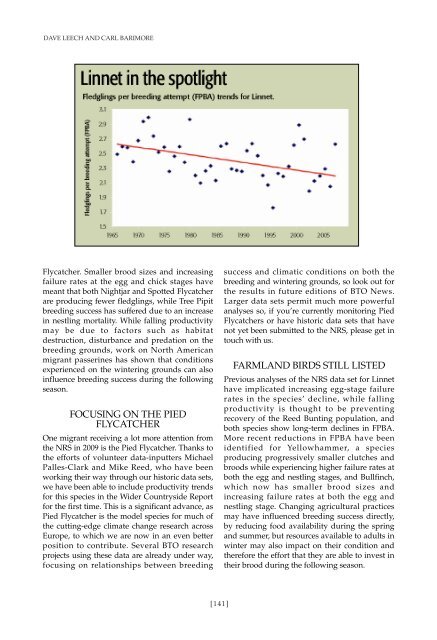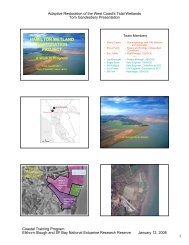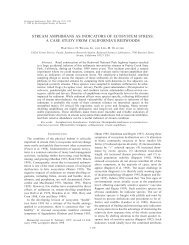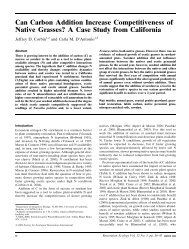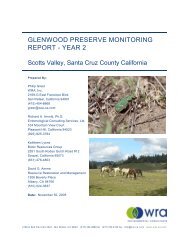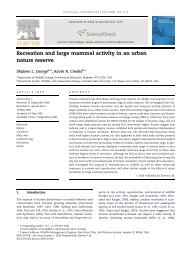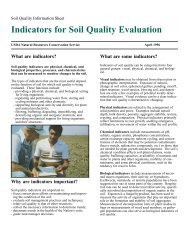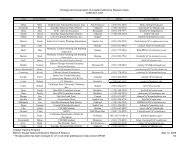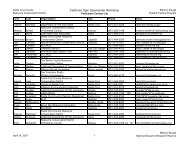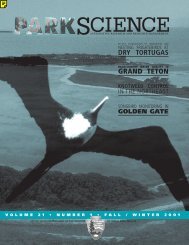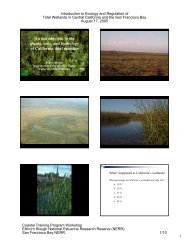BIRD POPULATIONS - Birdpop.org
BIRD POPULATIONS - Birdpop.org
BIRD POPULATIONS - Birdpop.org
- No tags were found...
You also want an ePaper? Increase the reach of your titles
YUMPU automatically turns print PDFs into web optimized ePapers that Google loves.
DAVE LEECH AND CARL BARIMOREFlycatcher. Smaller brood sizes and increasingfailure rates at the egg and chick stages havemeant that both Nightjar and Spotted Flycatcherare producing fewer fledglings, while Tree Pipitbreeding success has suffered due to an increasein nestling mortality. While falling productivitymay be due to factors such as habitatdestruction, disturbance and predation on thebreeding grounds, work on North Americanmigrant passerines has shown that conditionsexperienced on the wintering grounds can alsoinfluence breeding success during the followingseason.FOCUSING ON THE PIEDFLYCATCHEROne migrant receiving a lot more attention fromthe NRS in 2009 is the Pied Flycatcher. Thanks tothe efforts of volunteer data-inputters MichaelPalles-Clark and Mike Reed, who have beenworking their way through our historic data sets,we have been able to include productivity trendsfor this species in the Wider Countryside Reportfor the first time. This is a significant advance, asPied Flycatcher is the model species for much ofthe cutting-edge climate change research acrossEurope, to which we are now in an even betterposition to contribute. Several BTO researchprojects using these data are already under way,focusing on relationships between breedingsuccess and climatic conditions on both thebreeding and wintering grounds, so look out forthe results in future editions of BTO News.Larger data sets permit much more powerfulanalyses so, if you’re currently monitoring PiedFlycatchers or have historic data sets that havenot yet been submitted to the NRS, please get intouch with us.FARMLAND <strong>BIRD</strong>S STILL LISTEDPrevious analyses of the NRS data set for Linnethave implicated increasing egg-stage failurerates in the species’ decline, while fallingproductivity is thought to be preventingrecovery of the Reed Bunting population, andboth species show long-term declines in FPBA.More recent reductions in FPBA have beenidentified for Yellowhammer, a speciesproducing progressively smaller clutches andbroods while experiencing higher failure rates atboth the egg and nestling stages, and Bullfinch,which now has smaller brood sizes andincreasing failure rates at both the egg andnestling stage. Changing agricultural practicesmay have influenced breeding success directly,by reducing food availability during the springand summer, but resources available to adults inwinter may also impact on their condition andtherefore the effort that they are able to invest intheir brood during the following season.[141]


